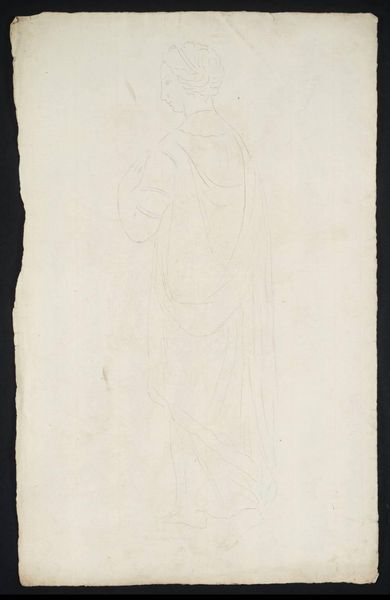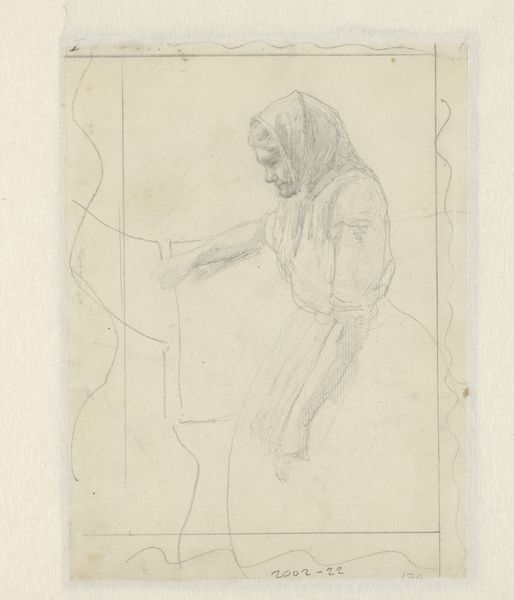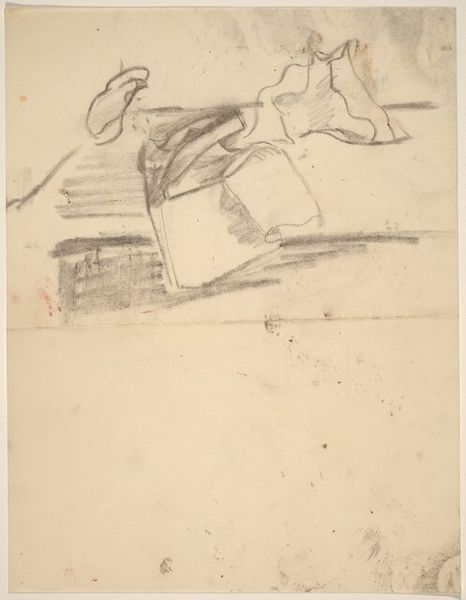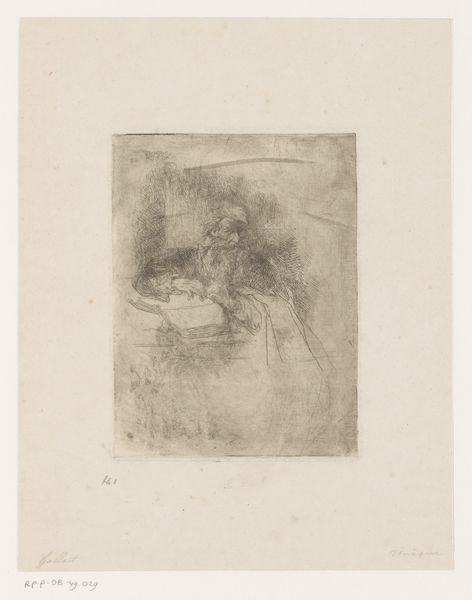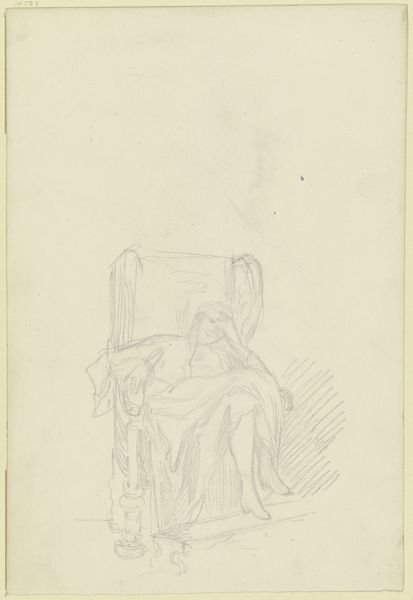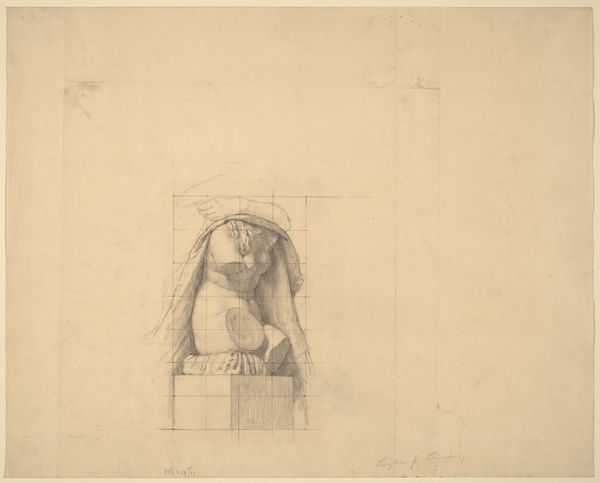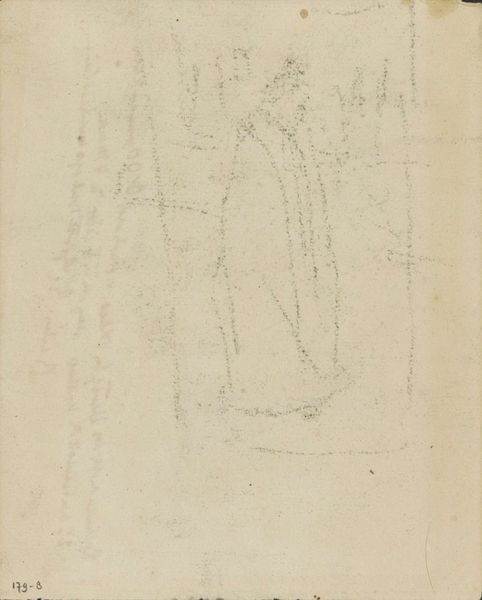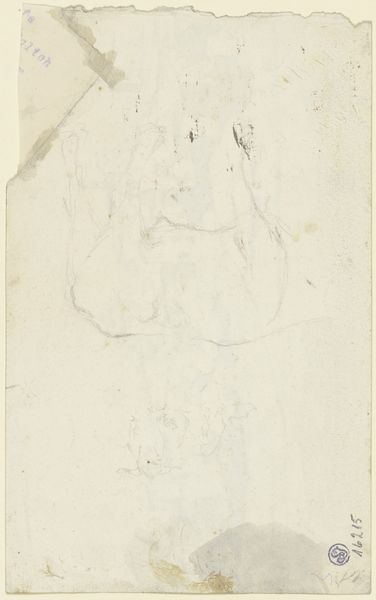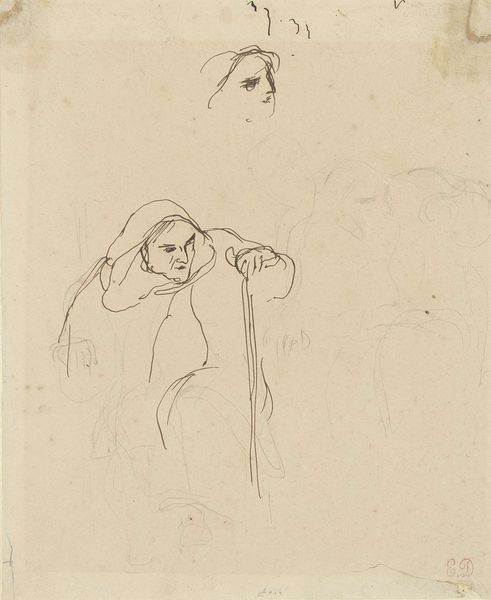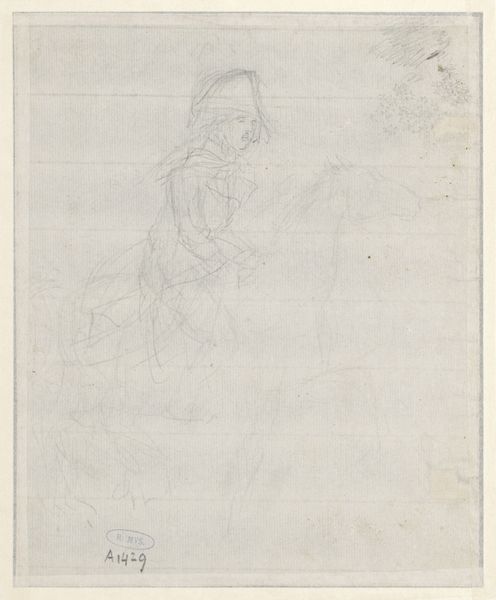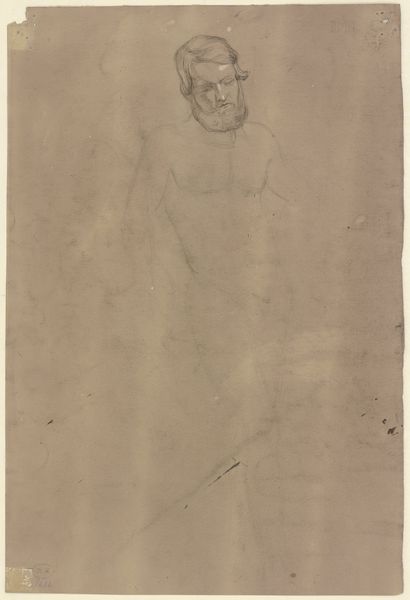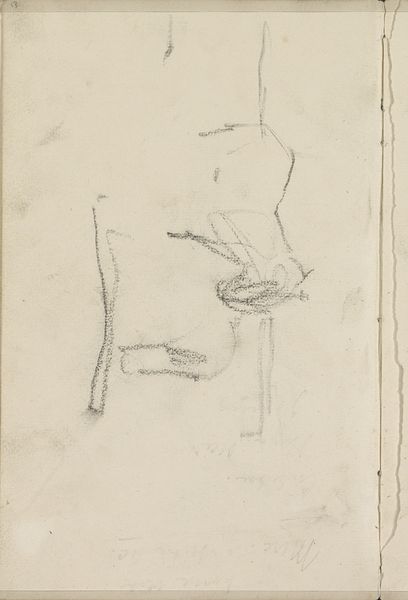
drawing
#
drawing
#
figuration
#
ancient-mediterranean
#
line
Dimensions: overall: 16.8 x 14.4 cm (6 5/8 x 5 11/16 in.)
Copyright: National Gallery of Art: CC0 1.0
John Flaxman created this pencil drawing, "Sphinx with Reclining Figures in Foreground," around the late 18th or early 19th century. Flaxman was working during a time of great fascination with classical antiquity, fueled by archaeological discoveries and the rise of Neoclassicism. The image presents a sphinx, an ancient symbol of mystery and wisdom, looming over reclining figures. Consider how the sphinx, often associated with Egypt and ancient Greece, would have resonated with audiences of Flaxman's time. It may have symbolized the allure and enigma of past civilizations, prompting reflection on the rise and fall of empires. The reclining figures add another layer of meaning. Are they worshipping or simply resting in the presence of this powerful symbol? Flaxman was associated with institutions such as the Royal Academy, which shaped artistic tastes and promoted certain aesthetic values. His work, while often classical in subject matter, also experimented with new forms of expression. To understand the drawing more fully, we can look at the artistic and literary sources that influenced Flaxman. This kind of historical research reveals the complex interplay between art, culture, and society.
Comments
No comments
Be the first to comment and join the conversation on the ultimate creative platform.

